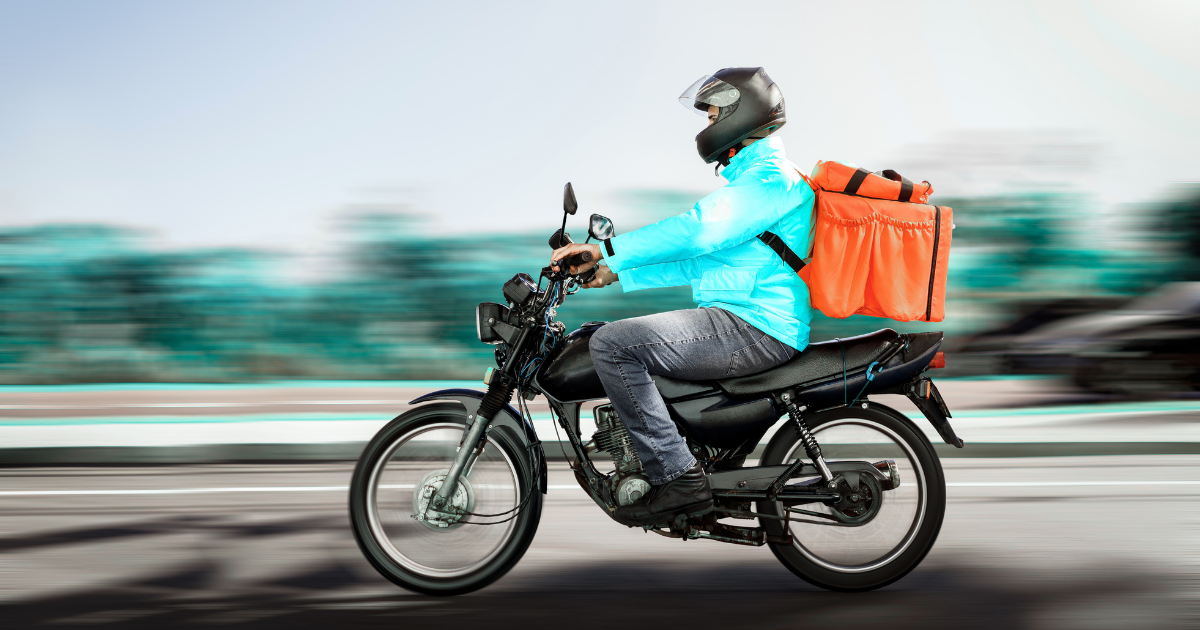
The Rise of Bike Taxis for Intra-City Delivery and Last-Mile Delivery
- Author: Rahul Jain
- Published On: 10 July 2023
- Category: Blog
In today's fast-paced world, where convenience and efficiency are paramount, the realms of transportation and logistics continue to undergo transformative changes. The way we get around cities is changing. In the past, we relied on cars and public transportation to get us where we needed to go. But now, a new wave of transportation options is emerging, led by intra-city delivery, bike taxi, and last-mile delivery.
These three transportation options are all playing a role in the future of urban mobility. Intra-city delivery is helping to make our cities more efficient and convenient. Bike taxis are providing a more sustainable and affordable way to get around. And last-mile delivery is helping to ensure that we get the things we need quickly and easily.
Intra-City Delivery: The Future of Urban Logistics
Intra-city delivery is the process of transporting goods or services within a city. This
can include anything from food delivery to package delivery. Intra-city delivery is
becoming increasingly popular as people demand more convenient and efficient
ways to get the things they need.
The rise of e-commerce has led to a surge in demand for intra-city delivery services.
In 2022, the global intra-city delivery market was valued at $230 billion and is
expected to grow to $320 billion by 2027. This growth is being driven by a number of
factors, including the increasing popularity of online shopping, the growth of the food
delivery industry, and the need for businesses to provide same-day or even same-
hour delivery.
There are a number of different intra-city delivery models, including:
- Courier services: These services use a fleet of vehicles, such as vans and trucks, to deliver packages to customers.
- Bike couriers: These services use bicycles to deliver packages in urban areas.
- Drone delivery: This is a relatively new technology that is still in the early stages of development. However, it has the potential to revolutionize intra-city delivery by providing a fast, efficient, and environmentally friendly way to deliver packages.
Bike Taxis: A Sustainable and Efficient Way to Get Around Town
Bike taxi is a type of transportation that uses motorbikes to transport passengers.
Bike taxis are often used in urban areas where traffic congestion is a problem. They
are also a more environmentally friendly option than cars. In cities like Bangalore,
India, where bike taxis have gained significant traction, studies indicate a 45%
reduction in travel time and a 30% decrease in fuel consumption compared to
traditional taxi services.
The Benefits of Using Bike Taxis for Intra-City Delivery
There are a number of benefits to using bike taxis for intra-city delivery. These
include:
- Speed: Bike taxis can typically travel faster than cars in congested city streets. This can help businesses to reduce delivery times and improve customer satisfaction.
- Manoeuvrability: Bike taxis are more manoeuvrable than cars, making them ideal for navigating narrow alleyways and crowded sidewalks. This can help businesses to reach customers in hard-to-access areas.
- Cost-effectiveness: Bike taxis are relatively inexpensive to operate. This can help businesses to save money on delivery costs.
- Environmental benefits: Bike taxis produce zero emissions, making them a more environmentally friendly option than traditional delivery methods.
The bike taxi industry is growing rapidly in popularity. In India, for example, the number of bike taxi users is expected to reach 100 million by 2025. This growth is being driven by a number of factors, including:
- The increasing popularity of e-commerce.
- The growing demand for last-mile delivery.
- The average speed of a bike taxi is 15-20 mph, compared to 12-15 mph for a car.
- Bike taxis are often used to deliver food, groceries, and other small items.
- Bike taxis can be a more sustainable option than traditional delivery vehicles.
- Bike taxis can reduce traffic congestion by up to 10%.
Last-Mile Delivery: The Final Frontier in E-Commerce
Last-mile delivery is the final leg of a delivery journey. This is the part of the
journey
where the package or goods are delivered to the customer's door. Last-mile delivery
is often the most expensive and time-consuming part of the delivery process.
In recent years, there has been a growing focus on last-mile delivery, as businesses
look for ways to improve the efficiency and cost-effectiveness of their delivery
operations. There are a number of different last-mile delivery solutions available,
including:
- Same-day delivery: This is a service that guarantees that a package will be delivered to the customer on the same day that it is ordered.
- Next-day delivery: This is a service that guarantees that a package will be delivered to the customer the next day after it is ordered.
- Local pickup: This is a service that allows customers to pick up their packages from a local store or other location.
- Drone delivery: This is a relatively new technology that has the potential to revolutionize last-mile delivery by providing a fast, efficient, and environmentally friendly way to deliver packages.
- Using crowdsourced delivery networks to deliver packages to customers.
The future of intra-city delivery, bike taxi, and last-mile delivery is bright. These transportation options are all playing a role in making our cities more efficient, convenient, and sustainable.
Conclusion
Intra-city delivery, bike taxis, and last-mile delivery are all crucial components of the modern transportation network. People are demanding more convenient and environmentally friendly ways to obtain the goods and services they require, which is why these services are growing in popularity. Intra-city delivery, bike taxis, and last- mile delivery are all fields that are always changing, and new technology and innovations are continually being developed that are improving these services. These services have a promising future and will probably become even more crucial in the years to come.

